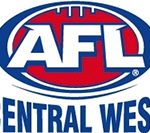The Coaches Box

This edition, recent High Performance Course attendee Lachlan Buszard, gives us his observational opinion on the AFL game and its effect on local football.
Are Current AFL trends killing the local game?
As local football clubs strive to become more professional, their attention is often turned towards the trends in today’s elite AFL football.
Headhunting recently retired players and coaches into Clubs in an effort to improve the Clubs intellectual property is one method often used in the pursuit of continuous improvement, others include: starting preseason training earlier each year, and creating strategic partnerships with gyms, schools and universities.
However do these initiatives really improve performance, or are they merely a façade put forward to justify “professionalism” at all levels?
On any given weekend you will now see the implementation of the 15 or 18 man zone on local footy fields around the country.
From U/14 level to open age football, players are been encouraged to “play the way the professionals do” in the modern game.
The standard 3,4,5 kick out defensive zone has been expanded into a full ground press and it is being rolled out as we speak at a training session or local ground near you. Whilst running a 15 or 18 man zone does not guarantee success it is another example of the way in which the local football environment is changing and becoming more progressive.
However do these changes mean the days of one on one contested football are dying out of the game, and if so, is this a good thing? How young is too young to be imploring these tactics?
Another recent change to the game and a contentious one at the moment is the number of interchange rotations used by sides on the weekend.
No longer is the bench seen as a “punishment” tool as it once was –the bench is now very much part of modern match day tactics.
AFL clubs today are rotating around 120 to 140 times per game and as the technology has improved, the strength and conditioning coaches are now tracking each athlete’s fatigue and intensity levels.
Whilst most local clubs do not have the resources to replicate this, I was astonished to witness an Under 14’s game where the onballers were changing every 5-6 minutes.
Surely at that age we just want the players to play football and have fun, not worry about trying to get on and off the ground (which with due respect just seemed to create a high level of confusion working out who was playing where).
Whilst rotating players through positions is an important part of the “enjoyment” factor for many players and it can be important for individual player development needs, the frequency of rotations required to maximise development and performance is not the same as at the elite level.
Local players are not professionally tuned athletes, and the difference in fatigue v perceived effort is not as great.
The speed at which the game is played is also very different, so coaches and clubs need to make sure they are comparing apples to apples and not apples to oranges.
With local football thriving across Australia, we must remember that it is just that, a local football game and the advancements at the elite level do not necessarily flow through to guarantee success at the local football level.
One thing that is guaranteed however is that these advancements are here to stay, that is until the next innovation is rolled out at the elite level.
Written By Lachlan Buszard (Level 2 Coach and recent High Performance Course attendee – Level 3)






























